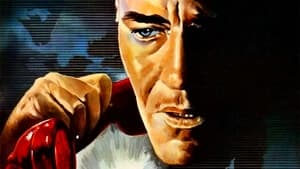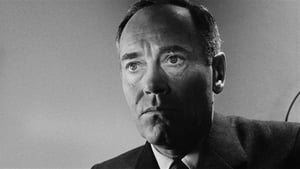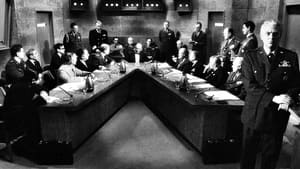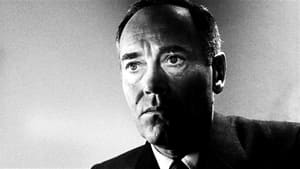Contact: [email protected]
Video Sources 0 Views
- Watch trailer
- Fail Safe Colorized


Synopsis
[ez-toc]







Introduction
In the ever-evolving landscape of cinema, the debate surrounding the colorization of classic films stands as a poignant conversation between preserving the past and embracing the possibilities of the present. This article delves into the intricacies of this discourse through the lens of a specific case study: “Fail Safe Colorized.” As we explore the impact of colorization on this Cold War thriller, we embark on a journey that spans the history of the film, the evolution of colorization techniques, and the ethical considerations that underpin the restoration of cinematic heritage.
Read Media File Transfer Agreement: Terms and Conditions
Read FAQ
The Colorization Process: An Artistic Evolution
Colorization, the process of adding color to black-and-white films, has been a subject of controversy and fascination since its inception. Initially, the practice involved meticulous hand-painting of each frame, a laborious endeavor that sought to breathe life into monochromatic classics. Over time, technological advancements paved the way for more sophisticated methods, with digital techniques and, more recently, AI-driven processes entering the fray.
The History and Significance of “Fail Safe Colorized”
A Glimpse into the Cold War Era
“Fail Safe Colorized,” released in 1964, offers a riveting portrayal of Cold War tensions and the perils of nuclear brinkmanship. Directed by Sidney Lumet, the film boasts a stellar cast including Henry Fonda, Walter Matthau, Dan O’Herlihy, Larry Hagman, and Fritz Weaver. Its stark black-and-white visuals, characteristic of the era, contributed to the film’s intensity, placing viewers on the edge of their seats as they grappled with the consequences of a nuclear catastrophe.
Critical Reception and Legacy
The original black-and-white version of “Fail Safe Colorized” garnered critical acclaim for its gripping narrative, outstanding performances, and Lumet’s adept direction. The film’s legacy endured through the years, cementing its status as a classic in the realm of Cold War cinema. However, as technology advanced and the art of colorization evolved, questions arose about the potential impact of adding color to this iconic work.
Sidney Lumet’s Vision
Director Sidney Lumet, known for his ability to create tension-laden narratives, envisioned “Fail Safe Colorized” as a stark exploration of the psychological and political dynamics of the Cold War. The absence of color was a deliberate choice, emphasizing the gravity of the narrative and accentuating the film’s moody and claustrophobic atmosphere. Lumet’s vision, intertwined with the monochromatic palette, became an integral part of the film’s identity.
The Evolution of Colorization Techniques in Film Restoration
A Technological Odyssey
The advent of colorization techniques marked a technological leap in the world of film restoration. Early attempts involved hand-painting each frame, a painstaking process that required a delicate touch and a deep understanding of the original cinematography. As technology progressed, the transition from analog to digital methods streamlined the colorization process, offering greater precision and flexibility.
Challenges in Maintaining Original Integrity
Colorizing a classic film like “Fail Safe Colorized” poses inherent challenges. Preserving the director’s original intent, the nuances of performances, and the film’s atmospheric qualities becomes a delicate balancing act. Filmmakers and colorization experts must navigate these challenges to ensure that the essence of the original work remains intact.
Pros and Cons: Debating the Ethics of Colorizing “Fail Safe Colorized”
Advocates for Colorization
Supporters of colorization argue that breathing new life into classic films through the addition of color can make them more appealing to contemporary audiences. By modernizing the visual aesthetics, colorization aims to bridge the gap between generations, introducing timeless works to viewers who might otherwise dismiss black-and-white films.
Concerns of Purists
On the opposing front, purists advocate for preserving films in their original black-and-white state, contending that altering the visual palette can compromise the artistic integrity of the work. For them, the stark contrast and monochromatic tones are integral to the film’s impact, serving as a testament to the filmmaking techniques of a bygone era.
The Colorized Cinematic Experience: Enhancing Visuals, Impact on Narrative
Analyzing Visual Choices in “Fail Safe”
Colorization introduces a new layer of interpretation to the visual elements of a film. In the case of “Fail Safe Colorized,” the addition of color may alter the mood and atmosphere crafted by Lumet in the original black-and-white version. Analyzing specific visual choices made during the colorization process provides insight into how the film’s narrative is reframed.
Immersive Viewing Experience
Proponents of colorization argue that the process can create a more immersive viewing experience. By adding color, the film gains a contemporary resonance, making it more accessible to audiences less accustomed to the starkness of black-and-white cinematography. The challenge lies in ensuring that the color enhances, rather than detracts from, the intended impact of the narrative.
Preserving Film Heritage: Balancing Nostalgia and Accessibility through Colorization
Accessibility for New Generations
One of the primary arguments in favor of colorization is its potential to introduce classic films to a new generation of viewers. As cinematic tastes evolve, younger audiences may be more inclined to engage with films that align with their visual expectations. Colorization serves as a bridge, connecting the past with the present and ensuring that cinematic treasures remain relevant.
Importance of Archival Preservation
While the accessibility argument holds weight, it is crucial to emphasize the parallel importance of preserving original black-and-white versions for archival and educational purposes. These pristine copies serve as historical artifacts, allowing future generations to witness films in their original form and appreciate the artistic choices of the filmmakers.
From Analog to Digital: The Future of Colorization Technology
Technological Advancements in Colorization
The future of colorization is intricately tied to technological advancements, with AI and machine learning playing a significant role. These emerging technologies offer the promise of increased precision and efficiency in colorization processes. However, the ethical considerations surrounding the use of AI in altering classic films warrant careful examination.
Benefits and Risks of AI-Driven Colorization
The benefits of AI-driven colorization include speed, accuracy, and the potential for greater fidelity to the original work. However, risks lie in the possibility of over-automation, leading to a loss of the human touch and an erosion of the director’s original vision. Striking a balance between technological innovation and artistic intent is paramount.
Embracing the Spectrum: A Case for Celebrating Both Black-and-White and Color Cinema
A Nuanced Approach
The conclusion drawn from the exploration of colorization is not a binary one but rather a call for a nuanced appreciation of cinematic artistry. The spectrum of visual storytelling encompasses both the stark elegance of black-and-white cinematography and the vibrant allure of color. Each holds a unique place in the tapestry of film history, offering distinct but equally valid viewing experiences.
Celebrating Duality in Cinema
Encouraging audiences to celebrate both black-and-white and color cinema fosters a richer cinematic experience. Rather than viewing colorization as a threat to the sanctity of classic films, it can be embraced as a form of reinterpretation, providing an alternative lens through which to engage with timeless narratives.
Conclusion: Navigating the Spectrum of Cinematic Preservation
In the final analysis, the colorization of “Fail Safe Colorized” serves as a microcosm of the broader colorization debate. As we navigate the spectrum of cinematic preservation, it becomes evident that the conversation extends beyond mere aesthetics. It is a dialogue that encompasses accessibility, technological innovation, and the delicate dance between honoring the past and embracing the future.
“Fail Safe Colorized” stands as a testament to the enduring nature of classic cinema and the evolving tools at our disposal for preserving its legacy. The film, whether viewed in its original black-and-white form or through the prism of colorization, invites audiences to grapple with the complexities of the human condition and the socio-political landscapes that shape our world.
As we continue to traverse the cinematic landscape, the spectrum of color and monochrome coexists, each contributing to the rich mosaic of film history. The challenge lies in finding a harmonious balance, where technological advancements enhance rather than diminish the essence of the original work. In this delicate dance, the heart of cinematic preservation beats, ensuring that the stories woven into the fabric of classic films endure for generations to come.




















